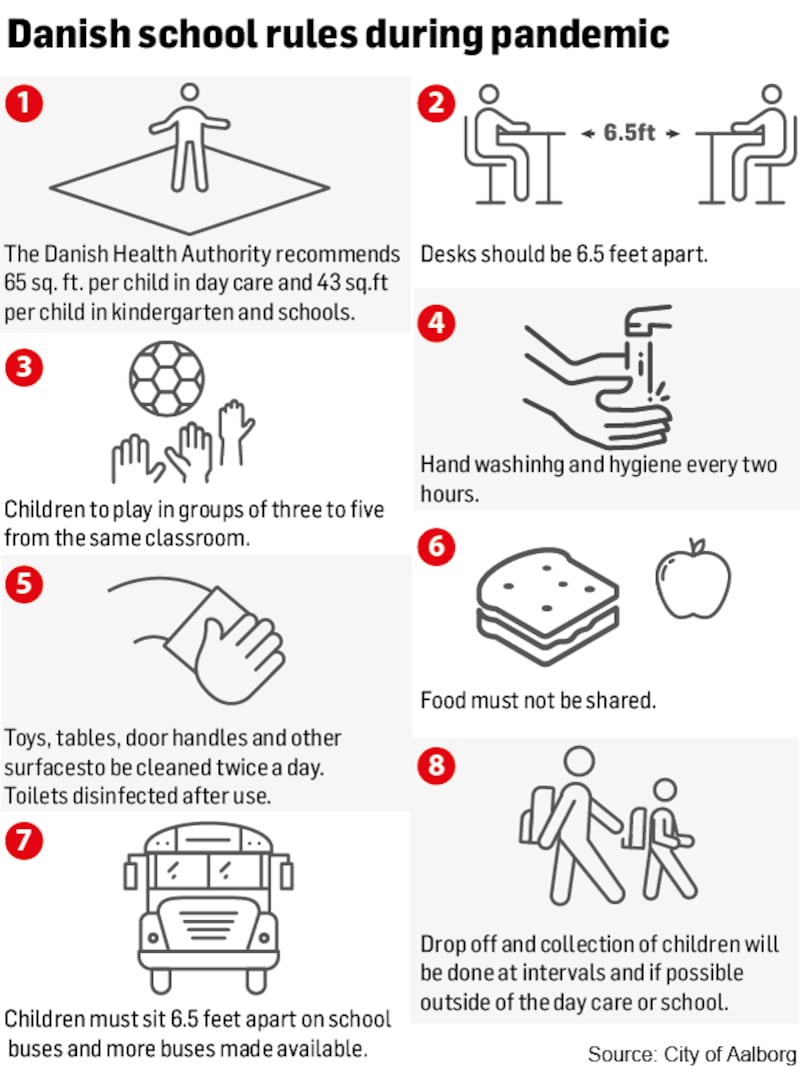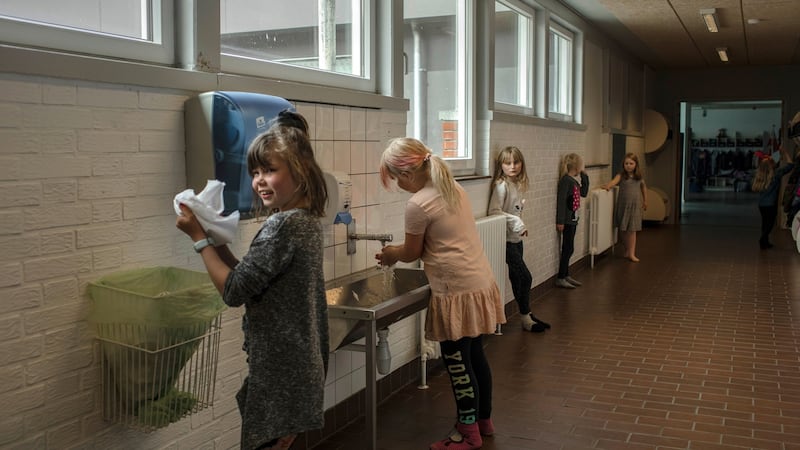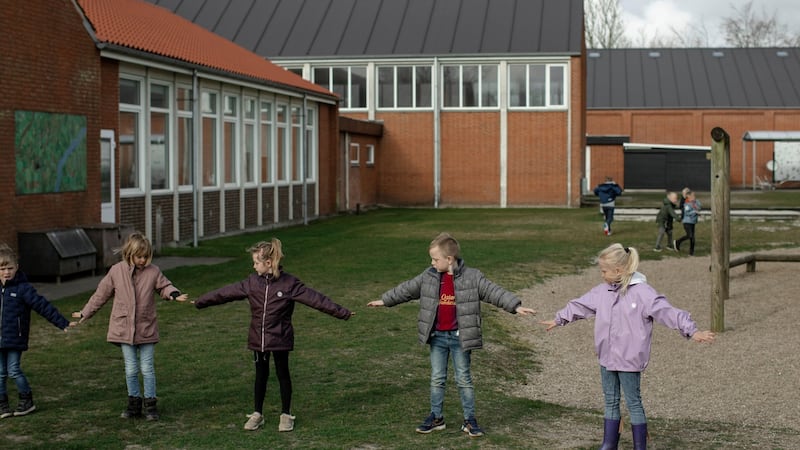To get a sense of what Irish classrooms might look like when they eventually reopen, Tingjerg primary school in Denmark offers a glimpse into the future.
Like many other primary schools in the country, it opened for the first time last week after a month in lockdown.
It is operating under strict rules aimed at limiting the risk of infections among children.
In classrooms, each desk is at least 2m apart. A maximum of 10 children is permitted in each class. All school rooms – such as the sports hall – are being used as teaching areas. Children can only play with a limited number of others during breaktime. Sharing of lunch is not allowed. There is handwashing every hour or so. And the drop-off and collection of children takes place at intervals.

Marco Damgaard, the school principal, says public health experts, parents, teachers and educators helped review and prepare the reopening plan.
“It’s an absolute quality stamp,” he said. “There are a lot of questions from parents and employees who need to be answered and that is only quite understandable... Clear and constructive communication between adults is crucial to the well-being, safety and learning of children.”
In Ireland, officials are drawing up a pathway for the potential reopening of schools subject to public health advice.
Current restrictions apply until May 5th. Well-placed sources say it is highly unlikely schools will reopen then, but the likelihood of primary schools reopening in June should become clearer.
Internet access
Minister for Health Simon Harris said at the weekend his personal preference was for primary schools to reopen for up to one day a week before the end of the academic year.
Principals and teachers have all signalled that they are ready to assist with school opening in line with the guidance of public health advice.
Páiric Clerkin of the Irish Primary Principals’ Network says an easing of the restrictions to facilitate safe access by school staff in the short term should be considered first.

This, he says, would ensure that critical leadership and management responsibilities can be fulfilled.
“This would help those for whom access to the internet at home has been problematic and school leaders and administrators who need direct access to school systems and physical documents to comply with legal obligations such as forms that must be returned to the Department of Education by the end of April, as well as recruitment-related matters,” he says.
John Boyle, general secretary of the Irish National Teachers' Organisation, says school reopening is feasible – subject to public health advice – but warns there will be major challenges.
Small rural schools, he says, have issues with transport and trying to accommodate four or five classes in the one classroom.
Class sizes
Average class sizes at primary level in Ireland have about 25 pupils but can be much higher. This compares to average class sizes of about 19 in Denmark.
“We would want to work with whatever advice is forthcoming, we’d want to plan it out appropriately, if a school opened for the morning for half the class, that half would go home rather than go to the playground and then the next half would come in after there would be a deep clean of the school,” he said.
Secondary schools – which finish up at the end of May – look set to remain shut, apart from a two-week period in July for Leaving Cert students preparing for exams.

During these two weeks, classes will be split and take place subject to social-distancing rules. This may prove to be a template for how schools resume in September.
Clive Byrne of the National Principals and Deputy Principals Association says schools will have to rethink issues such as integral aspects of school such as transport, school matches, assemblies.
“Our schools are designed to accommodate classes of up to 30 or so children, they aren’t designed for social distancing,” he says.
“So, will we be able to have 20-plus children in a room? Or will we need to split up the class and have some taught remotely in another room? These are all matters we’re going to have to discuss.”
Prof Sam McConkey of the Royal College of Surgeons in Ireland and a specialist in infectious diseases, says public health authorities will likely be guided by whether we make good progress in meeting a list of six criteria set by the World Health Organisation before opening schools.
These criteria include co-operation with public health measures, testing capacity and measures to help prevent re-infection.
“We’re making good progress on some of those, but we have a lot to do on others,” he says.
The good news, he says, is that the latest indications from data collected in Iceland and elsewhere are that children are not “super-spreaders”.
“Children aren’t the problem,” he says. “They have significantly lower infection rates. So, reopening schools should be completely doable.”















